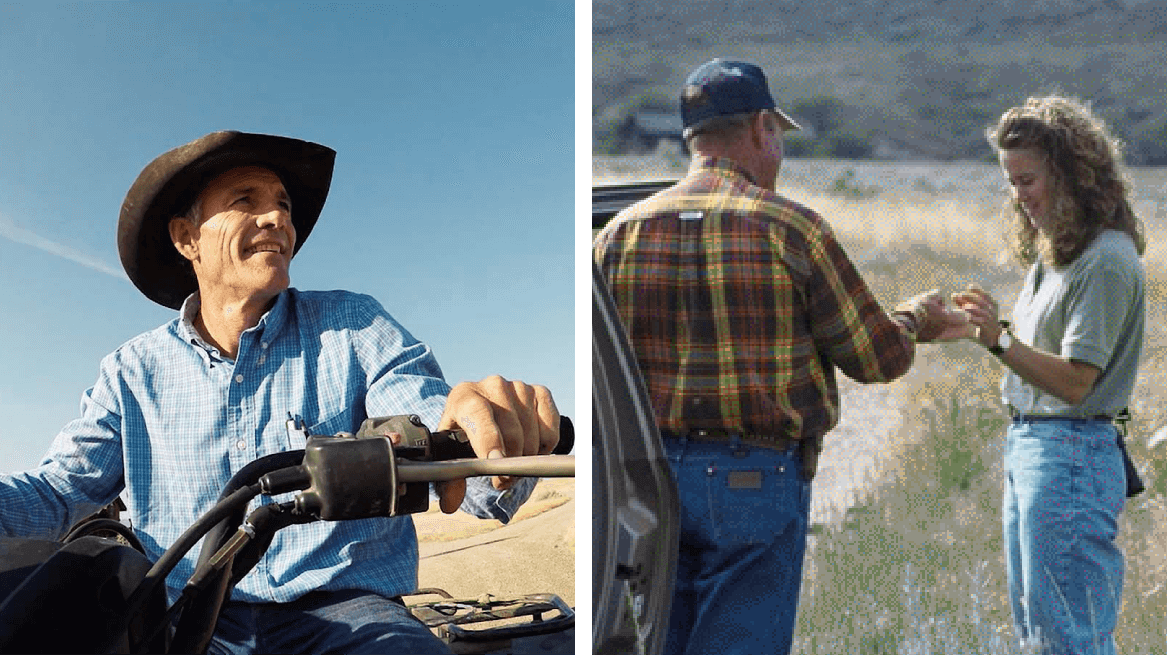Update from the field! Seasonal Bird Conservancy banders are working in the Chihuahuan Desert this winter to tag non-breeding grassland birds for our Motus project. Read the blog to learn more about what they are doing and how it will aid in our efforts to help grasslands and the birds that call it their home.
The Bird Conservancy of the Rockies’ social media posting on August 31 grabbed my attention. Featuring a close up of a Black Swift in hand, the accompanying post announced that the Black Swift Research Team had recently caught three Black Swifts, all of which had been banded 17 years ago in 2005 as adults, breaking the longevity record of oldest known for the species. My heart nearly stopped.
With over 70% of landownership in the Great Plains and Intermountain West being privately owned, landowners are one of the keys to conservation of wildlife habitat. Many at-risk bird species use private lands during their annual life-cycle. Our Private Lands Wildlife biologists work assist landowners in navigating the complex process for securing funding for management plans, habitat enhancements, and infrastructure improvements on working lands through USDA Farm Bill. By targeting the specific needs of local stakeholders and geographic areas, we not only make funding more accessible, but we use the resources more efficiently to ensure conservation is happening where it’s needed most.
Little is known about grassland birds during migration. Automated radio telemetry through the Motus Wildlife Tracking System can help us understand bird movement during this part of their life cycle. Bird Conservancy of the Rockies is implementing a three-phase, multiyear project to expand the Motus network into the Great Plains and Chihuahuan Desert, installing receiving stations along avian flyways to capture vital data and fill knowledge gaps.
Grassland bird populations are declining and the majority of species are understudied on their wintering grounds. In the winter of 2020, we implemented a regional monitoring program in the Chihuahuan Desert of Texas to establish baseline population estimates of grassland birds. We surveyed on a number of expansive cattle ranches, each exhibiting fascinating ecological and management histories. Through the implementation of this program, we can share that collaboration between ranching operations and grassland bird conservation is mutually beneficial.

Join us for a special virtual program featuring Grady Grissom, owner of Rancho Largo Custom Beef and 2017 Leopold Conservation Award Winner, and Tammy VerCauteren, Executive Director at Bird Conservancy of the Rockies. They’ll share their perspectives about cattle ranching and conservation on private lands, and their relationship to bird conservation. We’ll also explore how birds serve as indicators of healthy, productive landscapes and the role they can play in helping land managers as stewards of natural resources.
Black Swifts are thought to forage long distances from their nest sites, but their basic movement ecology is unknown. Knowledge about daily foraging routes and distances will help identify flight patterns, foraging hotspots and habitat relationships—critical to understanding the conservation needs of this enigmatic species.
Traditional and high-tech tools are revealing details about where Mountain Plovers spend time during migration and over winter—highlighting critical habitat locations and guiding much-needed conservation efforts.
After several weeks of intensive nest searching and observation, Bird Conservancy of the Rockies has confirmed that Baird’s Sparrows are actively breeding at Soapstone Prairie Natural Area—the first time the species has been documented reproducing in the State of Colorado. This remarkable discovery marks an exciting milestone in an already-eventful 2018 summer field season.
The grasslands of the Chihuahuan desert provide important overwintering habitat for over 90% of the migratory grassland species in western North America. Recently, our team joined partners and private landowners on a scenic tour through northern Mexico to visit some of Sustainable Grazing Network ranches that are working to conserve and restore grassland habitat for the benefit of people and birds.


